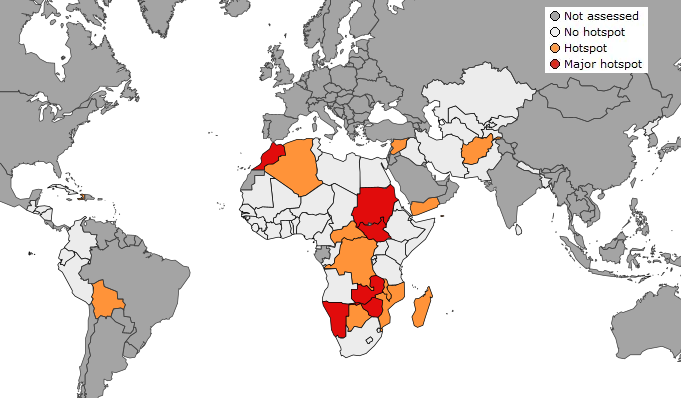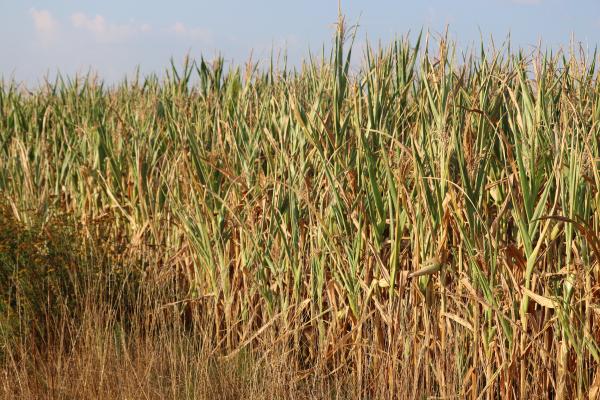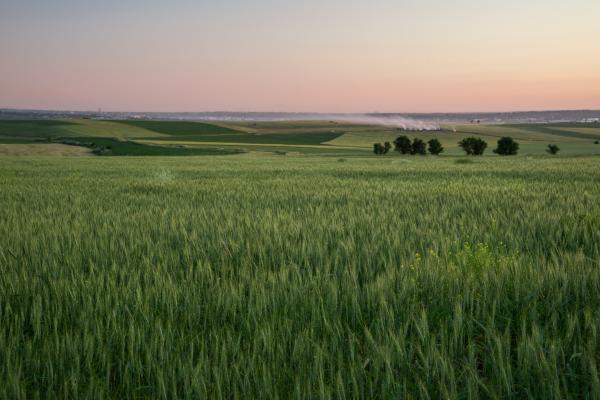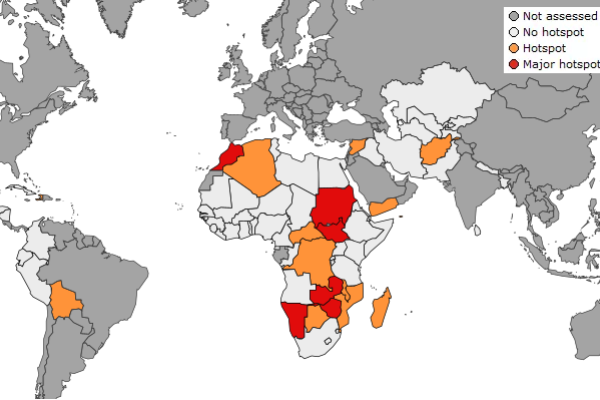
Main findings of the April global overview:
- The main agricultural season is ending in southern Africa, with harvest of summer crops having started in April. At regional level, below-average production is expected due to a drought that has affected crop conditions in many areas, in particular central and southern Zambia, southern Malawi, central Mozambique, northern Zimbabwe, north-eastern Botswana and north-eastern Namibia. Based on observed drought conditions in southern Africa, staple crop availability is expected to be less badly impacted in South Africa, a key producer in the area. According to Joint Research Centre yield forecasting using artificial intelligence, the latest forecast for maize in South Africa anticipates a yield ca. 14% below the 5-year average; this figure is in line with the South Africa Crop Estimate Committee forecast and the relevant Famine Early Warning Systems Network (FEWS NET) report.
- In the past month, large parts of East Africa have experienced exceptionally abundant rainfall, benefiting belg crops in Ethiopia and long-rains crops in Kenya but causing major and deadly flooding in central Kenya and parts of Tanzania. Low rainfall amounts have been observed in the western part of South Sudan, central Ethiopia, parts of southern Somalia and Uganda. In Sudan, parts of the country face a risk of famine (FEWS NET). Levels of acute food insecurity remain high in the region and could become even higher given the ongoing floods and escalating conflict in the region.
- In North Africa, at harvesting time in the winter cereal season, the impact of drought on crops was confirmed in Morocco and western Algeria. Central and eastern Algeria have experienced better rainfall conditions since December 2023, leading to close-to-average crop conditions. Pastoral areas in central Algeria had been exposed to drought stress and high temperatures in January and early February.
- In West Africa, the season’s first maize planting started in the southern bimodal parts of the region, along the coast of the Gulf of Guinea. A slight delay to the planting season is observed in some of the Middle Belt states in Nigeria and in parts of Benin, Togo and Ghana. The Copernicus Climate Change Service multimodel seasonal rainfall forecast for May to June 2024 indicates average to above-average rainfall in most parts of the region, but not in Senegal, Guinea, Sierra Leone, south-western Mali, south-western Burkina Faso or north-western Côte d’Ivoire.
- In the Middle East, prospects for winter cereals are favourable, except in the south of Iraq (Qadissiya and Babil) and the south and east of Iran (Fars, Bushehr, Khorasan). In Yemen, harvest of irrigated wheat is under way in the central highlands, with good prospects. However, food insecurity continues to affect 17 million out of the 30 million people in the region because of conflict and poor socioeconomic conditions.
- In central Asia, the conditions of winter cereals are close to average in all countries except for Turkmenistan. Sowing of spring wheat and barley has started under favourable conditions. In Afghanistan, the conditions of winter cereals are mixed (poor in the north-west and close to average in the rest of the country, or even above average in the south and south-west). In South Asia, harvest of irrigated rabi crops in Pakistan and dry-season boro rice in Bangladesh are under way, with good prospects.
- In continental South-East Asia, harvest of dry-season rice is under way with close-to-average prospects, except in Laos, where crop biomass is below average. A heatwave and a delayed monsoon may have an impact on wet-season rice. In Indonesia, harvest of wet-season rice is under way, with good prospects, while prospects are mixed in the Philippines.
- In Latin America and the Caribbean islands, ongoing harvests present poor prospects in Bolivia, and particularly concerning is the situation in Santa Cruz, the main grain-producing area in the country. By contrast, in Colombia, Cuba, Ecuador and Peru ongoing harvests have favourable prospects. The primera cycles have started in Guatemala, El Salvador, Honduras and Nicaragua under average rainfall conditions.
The next assessment is scheduled for the end of May 2024.
Details
- Publication date
- 15 May 2024
- Author
- Joint Research Centre
- JRC portfolios




